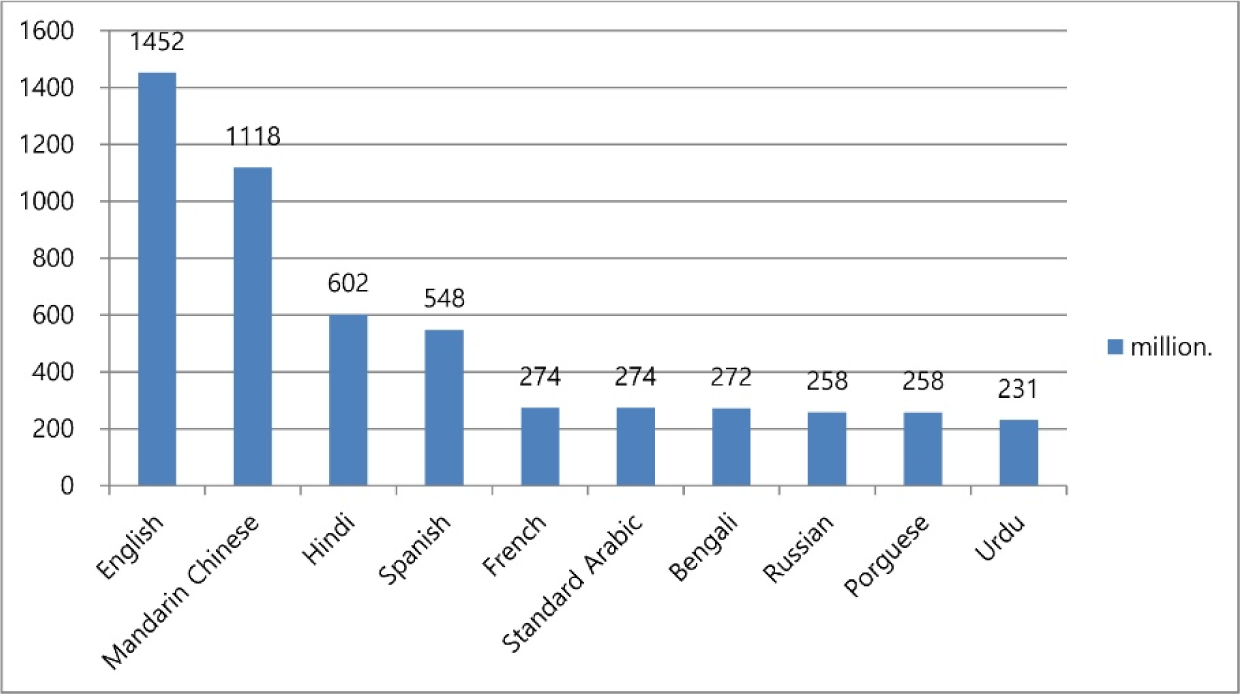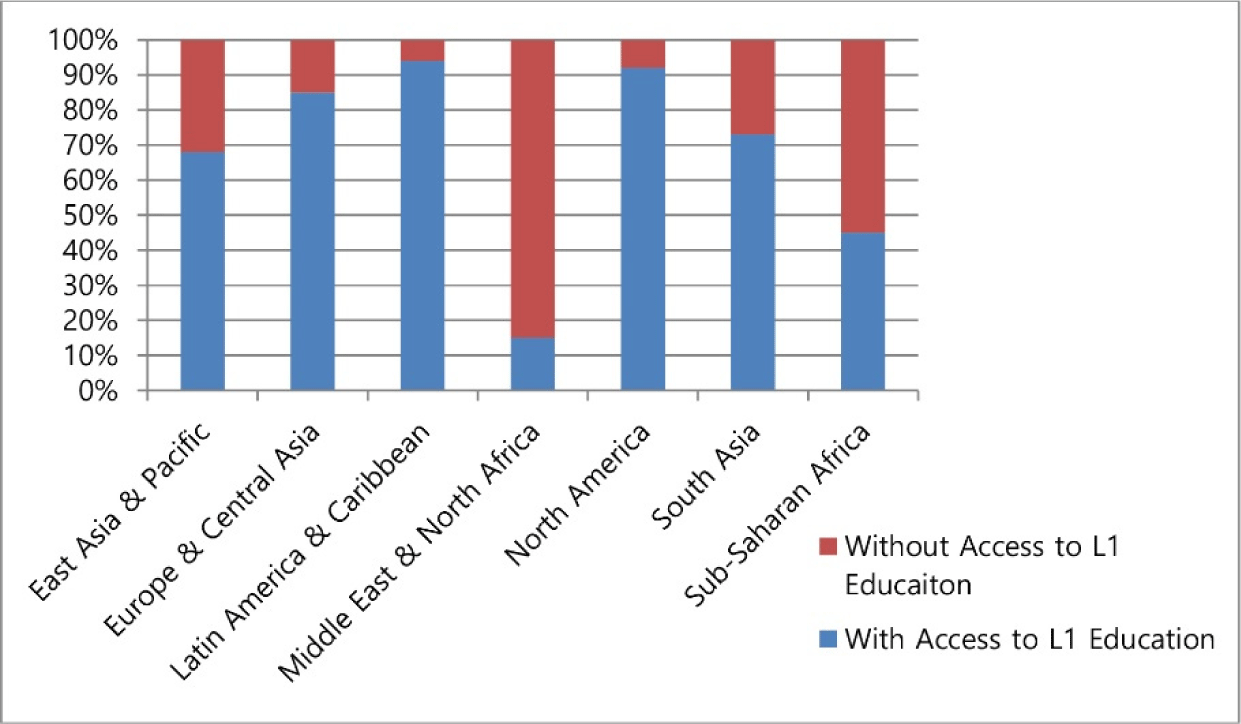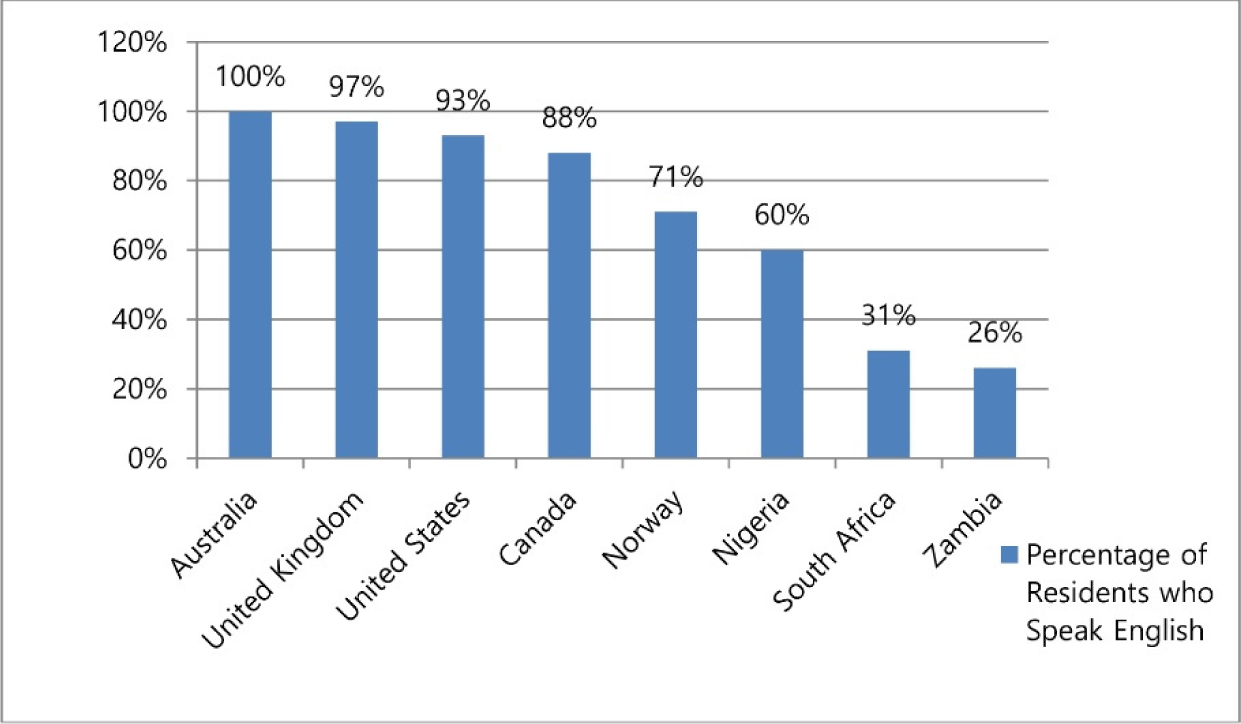1. Introduction
Language barriers and inequalities are a prevalent issue affecting individuals and communities worldwide. With globalization and the increasing need for cross-cultural communication, multilingualism has become more important than ever. However, the ability to speak multiple languages is not evenly distributed and it could lead to a number of social inequalities.
In fact, a large number of countries have social issues and problems caused by language barriers. Examples of such include India, a highly diverse country with over 22 official languages and numerous regional languages; Canada, a bilingual country with English and French as its official languages; Switzerland, with 4 official languages including German, French, Italian, and Romanish; Papua New Guinea, a linguistically diverse country with over 800 languages spoken; and South Africa with its 11 official languages. In countries like Papua New Guinea and South Africa, in rural areas where people may not be fluent in dominant languages great communication barriers can be created.
The current paper tries to investigate how multilingualism can bring about social phenomena by looking at how language is currently being used from a socio-linguistic perspective and explore potential conflicts caused by language barriers. Finally, the paper suggests a strong need for a universal language in the globalized world. In Section 2, multilingualism will be defined and language issues around the world related to multilingualism will be explored. Section 3 will examine how language barriers and inequalities caused by multilingualism affect individuals and societies globally. Section 4 discusses the necessity of a universal language and suggests ‘Unish’ as a lingua franca. Section 5 concludes the study.
2. Languages around the World
Multilingualism can be defined as the coexistence of more than two languages in a society (Pilipenko 2019). Comparing the large number of existing languages to the number of countries, multilingualism can be a natural phenomenon. The exact number of languages in the world is not known, but it is broadly estimated to be around 7,000. Ethnologue, a comprehensive database of world languages maintained by SIL International, an entity that is dedicated to linguistic research and language development.
According to Ethnologue, 7,151 languages are spoken today and there are less than 200 sovereign nations in the world (Extra 2007). It is also important to note that this is just an estimate, as the exact number of languages can be difficult to determine due to the ever-changing nature of languages. In other words, languages are dynamic, and new languages can emerge while others become extinct. In fact, about 40% of all languages (3,045 languages) spoken today are endangered with less than 1,000 speakers remaining. Languages become extinct when the users of the language no longer speak and teach the languages (Ethnologue 2023). If a language is endangered and has a declining number of speakers, the speakers of the language may also use a more widely spoken or dominant language for practical purposes.
Examples of endangered languages include Welsh language spoken in Wales, United Kingdom. Welsh has faced challenges in maintaining its use and vitality due to several factors, such as policies that discouraged its use, as well as the widespread use of English in Wales. Despite recent efforts to revive the language, it still remains an endangered language, and English is clearly the dominant language in Wales (Lunney et al. 1995). Then, one might wonder what languages include dominant languages in the world and what languages are most spoken in the world. Ethnologue 200 published a list of the largest languages in the world. Figure 1 shows the top 10 most spoken languages in the world in 2022.

As Figure 1 shows, English accounts for the largest language users with almost 1.5 billion speakers in the world. It is followed by the Mandarin Chinese language with nearly 1.2 billion speakers in the world. The other dominant languages include Hindi, Spanish, French, Standard Arabic, Bengali, Russian, Portuguese, and Urdu.1 What should be noted in the most spoken languages is that while English was nominated as the largest language in the world, the number includes both native and non-native speakers around the world. Mandarin Chinese is considered the largest language when counting only native languages, which can be attributed to China’s population. According to Ethnologue, the number of native English speakers is 373 million, while an additional 1.1 billion speakers of English are non-native speakers. English is spoken in 146 countries including many African countries (Ethnologue 2022). Figure 2 shows representative countries where English is dominantly used. As can be seen in Figure 2, English language is used in many countries, and the rate of use varies from country to country. While the usage rate of English is very high in North America, Britain, and Australia, the rate of English use in other countries is relatively low.
The percentages of English usage rates presented in Figure 2 indicate that English and other language or languages are used together in one country except Australia, where it is claimed that English is 100% used. As shown in Figure 1, many countries seem to have different language groups within its borders and the degree of heterogeneity would vary from country to country.
Mishina (2020) claims that linguistically homogeneous countries are difficult to encounter and the number of countries where more than 90 percent of the population speak a single language is very few— Japan, South Korea, etc. (Pilipenko 2019, Mishina 2020). Thus, multilingualism is a very common phenomenon in the globalized world, and it is imperative to investigate the impact of multilingualism on societies.
3. Potential Conflicts of Multilingualism
Multilingualism is, in fact, known to bring many benefits, including increased opportunities for communication, cultural exchanges, and increased job opportunities, and improved cognitive abilities (Cummins & Swain 2014, Valian 2015, Hartanto et al. 2018, Legault et al. 2019, among many others). In the global world, multilingualism is broadly regarded as an asset in the job market. Large-scale companies operate in multiple countries and require employees who can speak multiple languages.
In addition, research has shown that multilingualism can have a positive impact on cognitive abilities. According to Cummins & Swain (2014), Valian (2015), Hartanto et al. (2018), Legault et al. (2019), among many others, bilingual individuals have been found to perform better on tests of executive function, which involves the ability to switch between tasks and inhibit irrelevant information. Additionally, speaking multiple languages has been linked to improvements in memory, problem-solving, and critical thinking skills (Bialystok et al. 2012). While there are benefits to being multilingual, there are critical disadvantages or challenges associated with multilingualism.
When a variety of languages exist in one country or in one society, it suggests the existence of a dominant language or an official language. Having a dominant language can be both a benefit and a challenge in today’s global society. A dominant language is one that is spoken by a majority of people in a certain region, country, or even the entire world (Duchêne 2020). Dominant languages often have a significant impact on the culture, politics, and economy of the areas where they are spoken.
However, the dominance of a particular language can also have negative consequences. One of the biggest challenges is that it can lead to linguistic imperialism, where the language and culture of powerful countries are imposed on less powerful countries (Duchêne 2020). This can lead to the erosion of cultural diversity and the loss of languages that are important to local communities. It can also create a sense of linguistic inequality, where those who do not speak the dominant language are at a disadvantage in terms of access to education, employment, healthcare, and other opportunities.
Moreover, the dominance of a language can also reinforce existing power structures and inequalities. For example, in many countries such as India, the dominant language is associated with the elites, while marginalized groups speak minority languages (Mohanty 2010, 2019). This can create a language hierarchy, where those who speak the dominant language are seen as more intelligent or capable than those who do not. It is also important to recognize the ways in which the use of a dominant language can marginalize minority groups (Mohanty 2010, 2019; Duchêne 2020). In fact, many academics have studied the conflicts and problems caused by language barriers. Particularly, research has been conducted in the fields of education, healthcare system, politics and legal studies, and so on (Darvin & Norton 2014, Hargreaves 2022).
Firstly, in terms of education, according to Ethnologue (2021),2 approximately 35% of all children around the globe start their first education using a language that they are not fully familiar with. Despite the fact that education is a vital aspect for human well-being, studies indicate that over a third of the world’s children attend schools where the language of instruction (LOI) is not their native language. Figure 3 illustrates percentage of children with access to L2 education by region.

According to Ethnologue, the global population of children aged 0–19 exceeds 2.5 billion. Although around 1.65 million of them are able to receive education in their mother tongue (L1), there are over 890,000 who do not have this opportunity. Figure 3 illustrates that the impact of this disparity is greater on the world’s most destitute and susceptible communities, perpetuating cycles of poverty and social inequality in terms of education. A number of studies have suggested that having instruction with non-native language would make it difficult for learners to understand complex concepts and engage in meaningful discussions. Furthermore, students who are not fluent in LOI may feel less confident, and this can affect their motivation and performance in the classroom (Darvin & Norton 2014; Vandrick 2014; Jayadeva 2018, 2019; Demeter 2019; Borooah & Sabharwal 2021).
Secondly, the social domain most affected by language barriers is the healthcare system, and many academic studies in this field have actually been conducted (Carrasquillo et al. 1999, Barr & Wanat 2005, van Rosse et al. 2016, Venkatesan et al. 2022). van Rosse et al. (2016) examined the impact of language barriers on patient safety in hospital care and found that language barriers can lead to miscommunication and medication errors. Carrasquillo et al. (1999) examined the impact of language barriers on patient satisfaction in an emergency room, and found that language barriers can lead to decreased satisfaction with care and miscommunication, and longer waiting times. Barr & Wanat (2005) examined how language barriers can impact healthcare access in the African American community and found that language barriers can result in increased healthcare costs and decreased healthcare utilization.
Thirdly, language can be a key factor in perpetuating social inequality, particularly in the realm of politics. Ives (2014) argues that language barriers can limit access to political information and participation, which can in turn marginalize certain communities and contribute to political inequality. In his work, Ives emphasizes the importance of linguistic justice, or the fair distribution of language resources and opportunities. In addition, according to Fraga & Merseth (2016), lower rates of Latino and Asian American’s political participation in the United States can be attributed to language barriers. As shown above, language barriers can cause a number of social inequalities.
4. The Need for a Universal Language
In our increasingly globalized world, communication across linguistic and cultural barriers has become a critical challenge. While there are thousands of languages spoken around the world, there is no universal language that can be used by everyone to communicate. As we have examined in the previous sections, language barriers can cause social inequalities in a range of areas including limited opportunities for education and employment, healthcare and political participation. Attempts to address inequalities caused by language barriers have historically been constant. Research has been conducted on the necessity and development of a universal language, and Esperanto can be regarded as the representative constructed language so far.
Esperanto was invented by Zamenhof, a Polish ophthalmologist, in the late 19th century. Zamenhof grew up in a multilingual environment in Bialystok, Poland, where he witnessed the cultural and linguistic tensions between different ethnic groups. He believed that the diversity of languages was a barrier to international communication and that a universal language could help promote peace and understanding between nations (Li 2003). Zamenhof’s goal was to create a neutral language that would be easy to learn, with a regular grammar and a simple vocabulary. He hoped that Esperanto would serve as a common language for people from different countries and cultures to communicate with each other on an equal footing, without any one language being dominant (Sutton 2008). Esperanto gained popularity in the early 20th century, particularly in Europe, and has since been adopted by a global community of speakers. However, Esperanto, despite its idealistic goals and initial popularity, has not become as widely adopted as Zamenhof and its early supporters might have hoped for various reasons. While Esperanto may have inspired an intellectual movement, it appeared to be ineffectual and impractical as a medium of global communication (Patterson & Huff 1999, Phillipson 1999, Smokotin & Petrova 2015). For example, Patterson & Huff (1999) warned that an idea that is believed to be superior but challenging to implement will not replace practical strategies that utilize existing systems in medical field. One of the limitations of the language is that the language is based on Slavic and Romance languages, thus it was difficult to acquire for speakers from other linguistic backgrounds, and at the same time, the influence of English grew at an overwhelming rate, leaving Esperanto to lose its competitiveness as a world language.
Therefore, there is a strong need for a new constructed language, which can be more familiar to the world population. ‘Unish’ should be considered as an excellent artificial language that many people around the world can learn by complementing the shortcomings of previously developed artificial languages. Unish is an artificial language designed to overcome the limitations that are inherent in natural languages in terms of ease of acquisition and equality of use. In order to create a language that is easily accessible to the largest possible number of the world population, the Language Research Institute at Sejong University, in Seoul, South Korea, first selected vocabulary and grammar based on the principles of “commonality”, “simplicity”, and “ease of use” from among a total of 15 languages, including 14 major languages that were either native languages spoken by around 70 million people or international languages in the past, such as English, Spanish, Portuguese, Italian, French, German, Russian, Chinese, Japanese, Korean, Arabic, as well as the artificial language, Esperanto. At the same time, considering the fact that English is currently the most widely used language worldwide, the project actively utilizes English vocabulary and grammar, while removing the inconsistencies between spelling and pronunciation and irregularities in vocabulary and grammar to promote ease of learning and use.
Several studies have proven the advantages of Unish as a constructed language (Choo 2001; Lee 2002; Park & Tak 2017; Park & Chin 2020; Tak 2020; Park 2021, 2022). Lee (2002) compared Unish grammar to Esperanto and found that Unish is simpler, more logical, and more regular than Esperanto in linguistic aspects, such as the formation of interrogative, passive, relative pronouns, and agreements. Park (2021, 2022) argues functional categories of languages are sometimes extremely difficult for L2 or L3 learners. For example, articles are one of the notorious linguistic features that is very difficult to acquire. Park (2021, 2022) reviewed article systems in terms of typological aspects and concluded that having article systems in languages are not typologically neutral. It also reviewed article usage in Esperanto and Unish, and was concluded that Unish would be more typologically neutral and easy to acquire because it does not have articles at all. As many studies have proven, Unish has many linguistic advantageous features for language learners to acquire their additional language. Thus the current paper urges that Unish can be a successful and sustainable constructed language.
5. Conclusion
Multilingualism is a phenomenon that exists the world over in the globalized era, and that there are various issues that can arise related to it. The dominant language created as a result of multilingualism causes inequality between first-class citizens and those who do not speak or who are not fluent in the dominant language. The current study also confirmed that these problems can be found in many countries around the world and in various realms of society. The current paper argues that if a certain natural language is used as a global language, there will be problems of inequality between native and non-native speakers as we have discussed, thus in order to overcome these shortcomings, a new artificial language should be developed, and the current paper claims that ‘Unish’ can be a successful constructed language.

